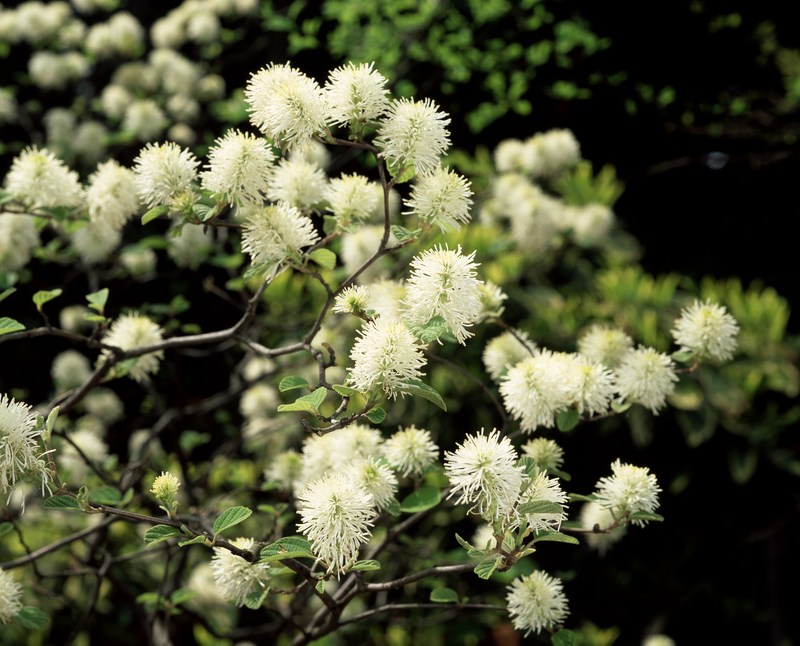Vertical gardening for a lush urban escape
Posted on 24/09/2025
Vertical Gardening for a Lush Urban Escape: A Complete Guide
In densely populated cities, green spaces often come at a premium. Yet the desire for nature never wavers. Vertical gardening for a lush urban escape is revolutionizing the way city dwellers integrate nature into their homes and communities. From vertical garden walls on balconies to living plant panels in office lobbies, these space-efficient solutions offer a verdant respite in the urban jungle. In this comprehensive guide, discover how to transform your concrete environments into vibrant oases with smart vertical planting techniques, design ideas, and practical care tips.

What is Vertical Gardening?
Vertical gardening is the practice of growing plants upward on structures or supports, rather than relying solely on traditional horizontal garden beds. This innovative approach can be as simple as a wall-mounted planter or as complex as a multi-story hydroponic green wall.
- Maximizes limited space
- Adds natural beauty to urban environments
- Improves air quality through increased plant density
- Can be tailored for indoors or outdoors
Vertical plant gardens allow city dwellers to cultivate greenery in apartments, balconies, patios, and even offices. The result? An immersive, lush retreat from urban chaos.
Why Choose Vertical Gardening?
Are you looking for an urban escape with vertical plants? Here's why this method stands out:
- Space efficiency: Utilize walls, fences, or even windows to grow more plants in less space.
- Aesthetic appeal: Living walls and hanging gardens create a striking, modern look.
- Health & wellness: Plants filter indoor air, absorb noise, and foster relaxation.
- Food production: Grow kitchen herbs or vegetables even in small apartments.
Vertical green spaces are not just beautiful--they're restorative, practical, and sustainable.
Types of Vertical Gardens
1. Living Walls/Green Walls
These vertical surfaces are covered with thriving vegetation rooted in soil or a substrate. Living walls may be modular (prefabricated panels) or custom-designed for interiors or exteriors. Living wall systems often include irrigation for easy upkeep.
2. Trellises and Climbing Plants
Classic and cost-effective, trellises support climbing vines like ivy, jasmine, or clematis. They create privacy screens, soften building facades, and attract pollinators for a rich biodiversity.
3. Wall-mounted Planters & Pocket Gardens
Individual pots, planters, or fabric pockets attached to vertical surfaces are a popular DIY approach. Pocket gardens work well for herbs, succulents, or compact flowers.
4. Pallet Gardens
Upcycling wooden pallets into tiered plant holders is an affordable entry into vertical gardening. Pallet gardens can be leaned against a wall or suspended for an instant green accent.
5. Hydroponic and Aeroponic Walls
For tech-savvy gardeners, soil-free systems use nutrient-rich water mist or solutions to support rapid, lush growth. These modern vertical gardens offer maximum yield for minimum space.
Benefits of Vertical Gardening in Urban Areas
- Greener living: Improves mental well-being by increasing daily exposure to nature.
- Air purification: Plants absorb pollutants and increase oxygen indoors.
- Energy savings: Exterior living walls can insulate buildings, reducing heating and cooling costs.
- Noise reduction: Dense vertical foliage helps muffle urban sounds.
- Wildlife habitat: Living walls provide nectar, pollen, and shelter for birds and insects.
Designing Your Own Lush Urban Escape: Step-by-Step
Step 1: Assess Your Space
Where do you want your vertical garden? Whether a sunny balcony wall, a shady bathroom corner, or a kitchen backsplash, take note of:
- Light exposure (full sun, part-shade, or shade)
- Available space (height x width)
- Surface type (brick, wood, plaster, chain-link, etc.)
Step 2: Choose the Right Plants
Plant selection is key to a thriving vertical green retreat. Consider:
- Light needs: Match plants to your space's natural light.
- Growth habit: Opt for trailing, climbing, or compact varieties.
- Maintenance: Busy city life? Choose low-care, drought-tolerant species.
Popular plants for urban vertical gardens include:
- Herbs: Basil, mint, parsley, oregano
- Succulents: Sedum, echeveria, crassula
- Ferns and mosses (for low-light or moisture-rich rooms)
- Flowering annuals: Nasturtiums, petunias, begonias
- Edible greens: Lettuce, kale, spinach, strawberries
Step 3: Select Your System
Decide between ready-made vertical planters, DIY solutions, or professional installations.
- Modular panels: For large-scale or permanent indoor/outdoor green walls
- Wall pockets: Affordable and easy for beginners
- Trellises and wires: Ideal for climbing species and privacy screens
- Pallets or shelves: Upcycling for creative charm
Step 4: Install Proper Irrigation and Drainage
Adequate watering is crucial for vertical gardens. Options include:
- Self-watering planters: Built-in reservoirs reduce maintenance
- Drip irrigation systems: Automated watering for large or high-up walls
- Manual watering: Suitable for small, accessible gardens
Ensure effective drainage to prevent waterlogging and root rot.
Step 5: Plant, Arrange, and Enjoy
When planting, arrange taller and trailing plants for easy maintenance and maximum visual impact. Mix textures and colors for a lively aesthetic. Incorporate art, mirrors, or lighting for a truly inspiring urban oasis.
Creative Vertical Garden Ideas for City Dwellers
Balcony Living Wall
Transform a balcony's bare partition into a scented, flowering tapestry with modular vertical planters. Layer with aromatic herbs for culinary inspiration and natural privacy.
Indoor Statement Green Wall
Install a vertical garden in your living room or home office to purify air and foster relaxation. Pick low-light plants for north-facing rooms, or sun-lovers for well-lit spaces.
Kitchen Herb Wall
Mount pots or wall pockets above your counter for fresh herbs at your fingertips. Compact greens such as chives, thyme, and basil thrive with a sunny kitchen window.
Hallway or Entryway Plant Wall
Impress guests with a living welcome! Select easy-care pothos, philodendrons, or ferns for low-light corridors.
Outdoor Privacy Screens
Grow climbing jasmine, passionflower, or clematis on trellises to substitute for solid fencing. The vibrant foliage provides both screening and a tranquil ambiance.
Maintenance and Care for Vertical Gardens
1. Watering:- Check soil moisture regularly; vertical gardens can dry out faster than traditional beds.
- Install drip or self-watering systems to automate irrigation.
- Add slow-release fertilizer or liquid plant food according to your plant's needs.
- Regularly remove dead leaves and spent blooms for a lush appearance.
- Trim trailing plants to control overgrowth and encourage bushier growth.
- Keep an eye out for pests like aphids, especially in dense plantings.
- Use organic remedies for sustainable control.
- Replace annuals or re-pot perennials as needed to maintain vitality.
Best Plants for a Vertical Urban Garden
- Pothos (Epipremnum aureum): Hardy, low-light tolerant vine perfect for beginners.
- Spider Plant (Chlorophytum comosum): Adaptable to a variety of light conditions and air-purifying.
- Succulents: Ideal for sunny, dry spaces; minimal maintenance needed.
- Bromeliads: Colorful indoor/outdoor options for tropical flair.
- Ferns: Provide lush foliage for shady, humid spots.
- Herbs: Mint, oregano, basil, chives--easy to harvest and highly aromatic.
- Lettuce and leafy greens: Fast-growing and rewarding for chefs.
Vertical Gardening Sustainability and Urban Impact
Vertical gardens not only create your own lush retreat; they also promote urban sustainability:
- Mitigate the urban heat island effect by cooling and shading building exteriors.
- Capture carbon dioxide and pollutants, improving city air quality.
- Support local food production--encourage neighbors to join in!
- Reduce stormwater runoff by absorbing rainfall.
By adopting vertical gardening systems, city dwellers can become agents of change, greening the world one wall at a time.

Frequently Asked Questions about Urban Vertical Gardening
Is vertical gardening expensive?
Costs vary. Small DIY wall planters or upcycled pallet gardens are inexpensive; commercial living wall systems can be pricier due to design, irrigation, and installation needs. Start small and scale up!
Can I grow vegetables in vertical planter walls?
Yes! Leafy greens, strawberries, cherry tomatoes, and many herbs thrive in vertical setups, provided they get enough sun and water.
Are vertical gardens safe for indoor environments?
Absolutely. Choose houseplants known for air-purifying qualities (like pothos or spider plants) and non-toxic varieties if you have pets or children.
How often should I water my vertical garden?
Frequency depends on plant type, garden location, and season. Walls in sunny or windy spots dry quickly, needing more frequent watering. Automated irrigation helps maintain consistent hydration.
Conclusion: Your Vertical Urban Escape Awaits
In a world where urban living often means less space and more stress, vertical gardening for a lush urban escape presents an inspired path to personal fulfillment and environmental betterment. With a bit of planning and creativity, everyone--from busy professionals to passionate hobbyists--can transform their city habitat into a thriving green sanctuary that nourishes the soul, the body, and the planet.
Urban vertical gardens are more than a trend--they're a movement. They promise not just beauty, but a better way to live. Start your journey today, watch your lush walls bloom, and bring nature back to the city you call home.



